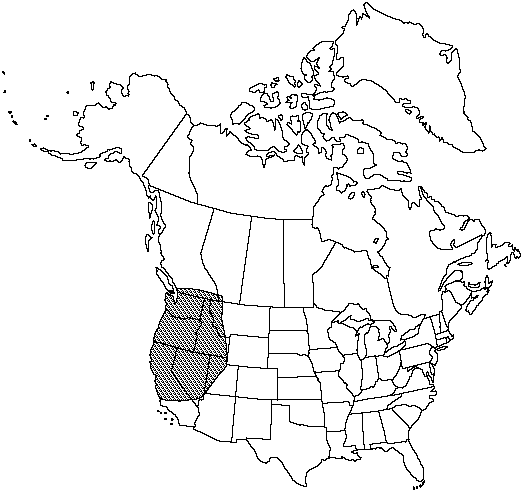Cheilanthes gracillima
in Emory,Rep. U.S. Mex. Bound. 2: 234. 1859.
Stems short-creeping, 4–8 mm diam.; scales uniformly brown or with poorly defined, dark, central stripe, linear-lanceolate, straight to slightly contorted, loosely appressed, persistent. Leaves clustered, 5–25 cm; vernation noncircinate. Petiole dark-brown, rounded adaxially. Blade linear-oblong, 2–3-pinnate at base, 1–2.5 cm wide; rachis rounded adaxially, with scattered linear scales, not pubescent. Pinnae not articulate, dark color of stalk continuing into pinna base, basal pair not conspicuously larger than adjacent pair, usually equilateral, appearing sparsely pubescent or glabrous adaxially. Costae green adaxially for most of length; abaxial scales multiseriate, linear, truncate at base, inconspicuous, the largest 0.1–0.4 mm wide, loosely imbricate, not concealing ultimate segments, long-ciliate, cilia usually confined to base. Ultimate segments oblong or rarely oval, beadlike, the largest 1.5–3 mm, abaxially densely covered with branched hairs and small, ciliate scales, adaxially with scattered, branched hairs or glabrescent. False indusia marginal, slightly differentiated, 0.05–0.25 mm wide. Sori ± continuous around segment margins. Sporangia containing 64 spores.
Habitat: Cliffs and rocky slopes, usually on igneous substrates
Elevation: 800–3000 m
Distribution

Alta., B.C., Calif., Idaho, Mont., Nev., Oreg., Utah, Wash.
Discussion
Cheilanthes gracillima is a well-marked species, but it apparently hybridizes with C. intertexta (see reticulogram) to produce plants of intermediate morphology with malformed spores that have been called C. gracillima var. aberrans M. E. Jones (A. R. Smith 1974).
Selected References
None.